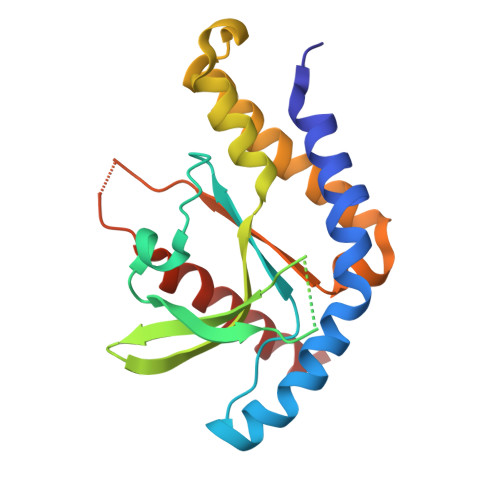A fluorescent STING ligand sensor for high-throughput screening of compounds that can enhance tumor immunotherapy.
Sun, P., Wang, B., Liu, C., Wang, Z., Liu, Y., Qiao, Y.B., Li, X.(2025) Cell Rep Methods 5: 101106-101106
- PubMed: 40669456
- DOI: https://doi.org/10.1016/j.crmeth.2025.101106
- Primary Citation of Related Structures:
8Z37 - PubMed Abstract:
The activation of the stimulator of interferon genes (STING) pathway triggers the release of type I interferons that can potentiate the host immune response against tumors. STING agonism is therefore a promising strategy for the development of cancer immunotherapy; however, sensitive tools and assays for the discovery of STING modulators are currently limited. Here, we develop and characterize a STING ligand sensor, FiSL, to detect STING ligands in vitro. Utilizing FiSL, we identify honokiol, a natural compound derived from Magnolia species, as an orally available STING agonist from a bioactive compound library. Functional studies reveal that honokiol exerts antitumor activity in a STING-dependent manner. Moreover, in STING-humanized mouse tumor models, honokiol enhances the efficacy of anti-PD-(L)1 immunotherapy. Collectively, we have developed FiSL as a tool for high-throughput screening of STING ligands and revealed honokiol as a STING agonist that can be harnessed to treat human cancer.
- Shanxi Key Laboratory of Innovative Drug for the Treatment of Serious Diseases Basing on the Chronic Inflammation, Shanxi University of Chinese Medicine, Jinzhong 030619, China; State Key Laboratory of Epigenetic Regulation and Intervention, Institute of Biophysics, Chinese Academy of Sciences, Beijing 100101, China.
Organizational Affiliation:



















